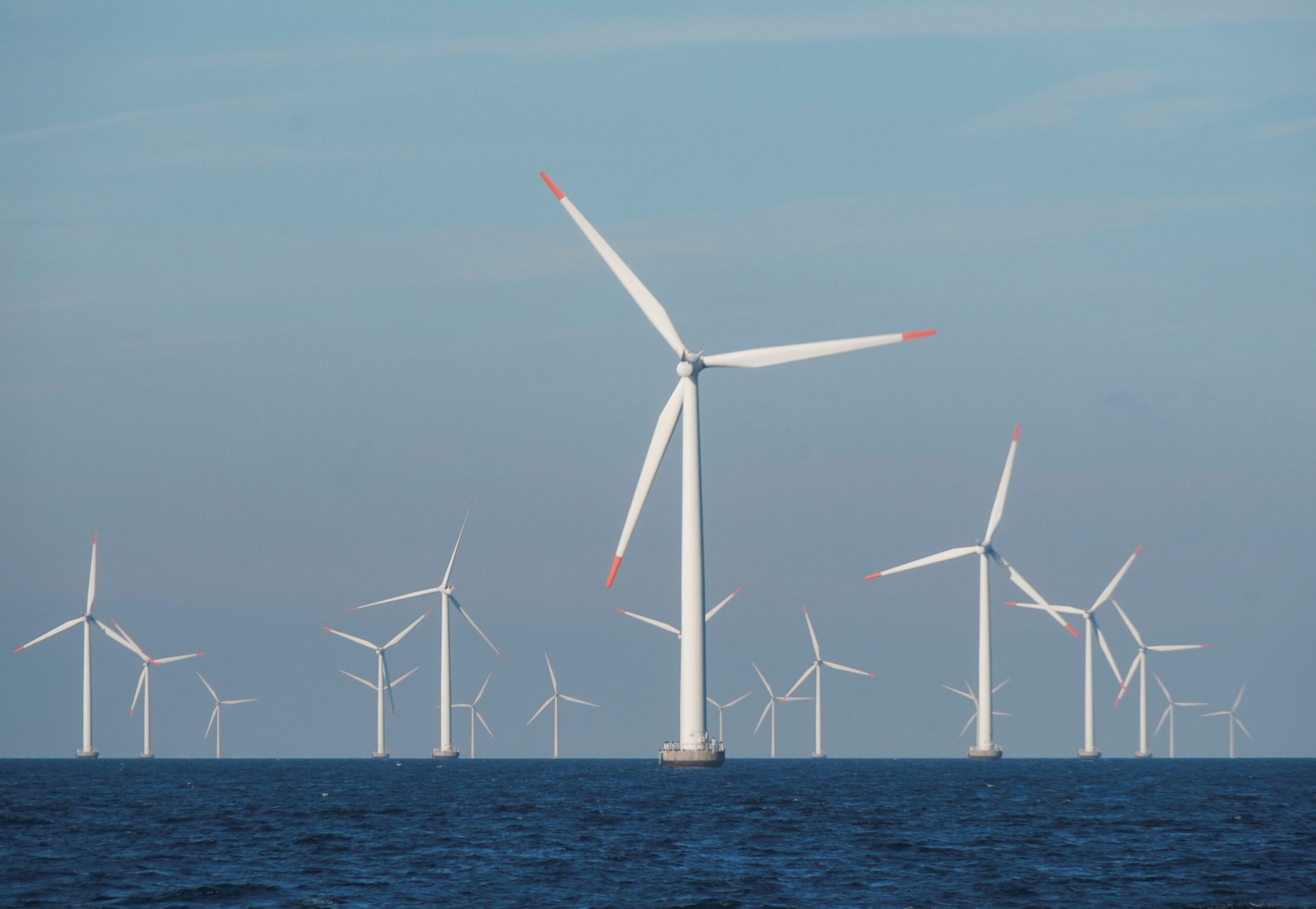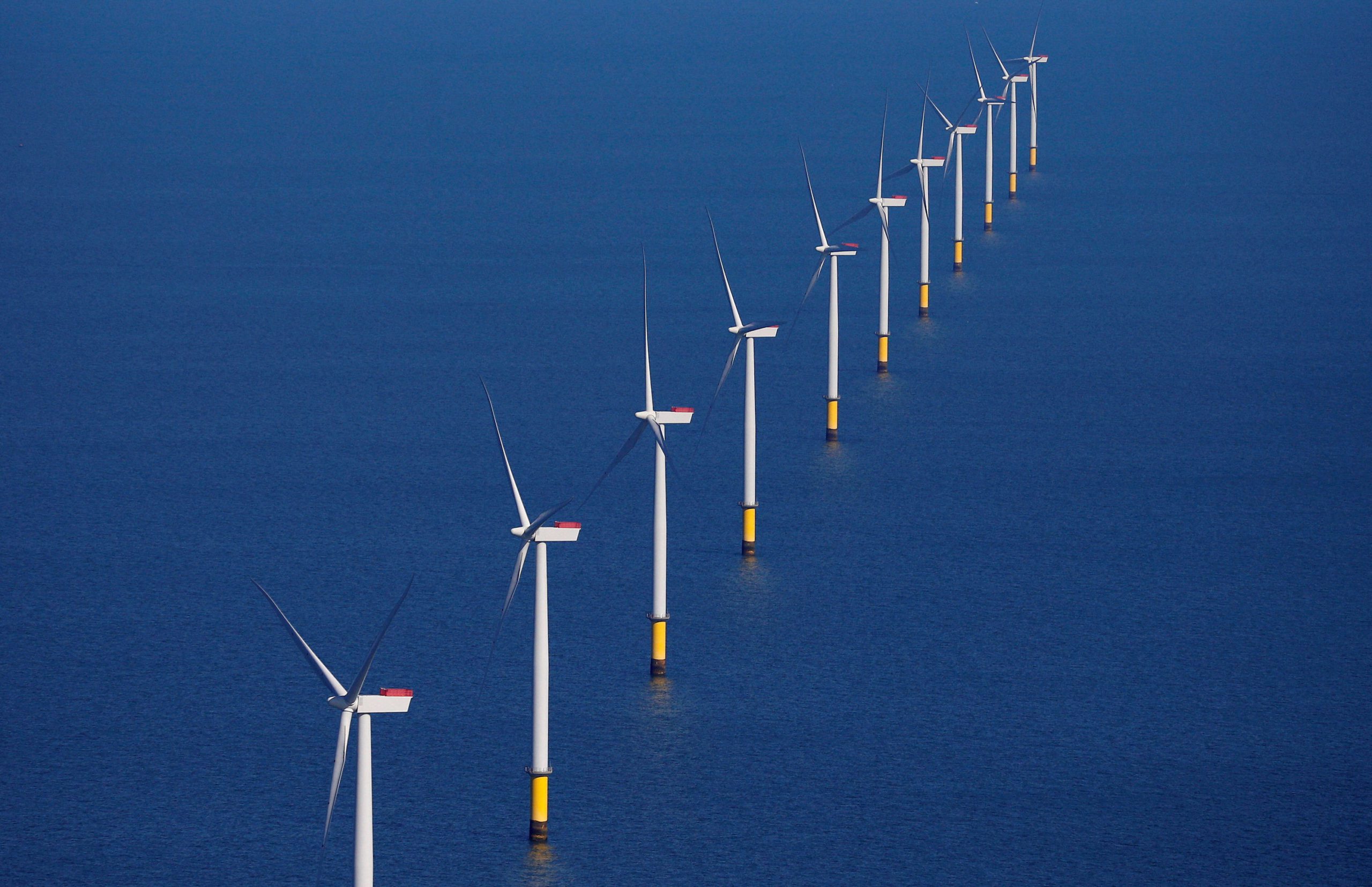(Bloomberg) —
Weeks after a busted wind turbine washed onto Nantucket shores, residents of this wealthy Massachusetts enclave are still angry. Some even liken the accident to an oil spill.
While their ire belies the fleeting nature of the event — waters were re-opened for swimming within 24 hours — the sense of harm felt by the community threatens to cast a long shadow. Vineyard Wind’s project south of Nantucket is the fledgling industry’s marquee venture, heralding a massive buildout of wind energy that would provide coastal cities with zero-carbon electricity. What happens here could have implications for a raft of other projects planned off Martha’s Vineyard, Atlantic City and elsewhere on the Eastern seaboard.
“The great Nantucket experiment gets an F-minus,” says Kevin O’Leary, chairman of O’Leary Ventures and an investor on the reality show Shark Tank who visits Nantucket every summer. “It’s not a golden example of success in wind turbines, that’s for sure.”
Federal regulators ordered Vineyard Wind to halt construction and electricity production after the accident. The company along with turbine maker GE Vernova said Friday they are focused on cleaning up the debris, removing what’s left of the broken blade and restarting operations. “Vineyard Wind is a critically important project for the region’s energy future, and delivering this project safely is our highest priority,” Vineyard Wind Chief Executive Officer Klaus Skoust Møeller said in the statement.
Offshore wind is controversial across many coastal communities, including this one, with property owners complaining of obstructed views and fishermen warning of fragile sea habitats. But those local concerns tend to be overshadowed by the existential threat of global warming and the urgent need for clean energy, especially in blue states.
In Nantucket, there’s a growing sense that the roughly 50-square-mile island has become a casualty in the push for cleaner energy. So any accident, however minor, involving the nearby farm was bound to become a flashpoint in the broader fight over wind.
Nantucket community leaders have said they intend to renegotiate the island’s “good neighbor” agreement with Vineyard Wind, which is jointly owned by Iberdrola SA subsidiary Avangrid Inc. and Copenhagen Infrastructure Partners.
Further afield, the accident offers fresh ammunition to wind foes in Washington. Republican presidential nominee Donald Trump, who famously battled an offshore project within view of his golf course in Aberdeen, Scotland, years before his first term in the White House, has vowed to target the sector if he’s elected again. A second term could see him pause new projects in the same manner that President Joe Biden halted the sale of new offshore oil leases and the issuance of new permits to export natural gas.
Biden’s moves were underpinned by promises of new federal reviews of the work, and Trump could follow a similar tactic, justifying a wind permitting moratorium by launching new government probes of the development, including the safety of GE Vernova turbines used at the Vineyard Wind project.
Vineyard’s fate has implications for eight other commercial offshore wind farms that have been approved to be built in federal waters along the US East Coast, with the potential to generate some 12.9 gigawatts of emission-free electricity. (At least eight more are pending before federal regulators, and still other projects are planned in Atlantic, Pacific and Gulf of Mexico waters.)
Regardless of who wins the November presidential election, analysts say the episode is likely to encourage new government requirements for offshore wind developers to set aside money to cover the costs of addressing accidents and dismantling turbines decades from now.
“Wind power, in a vacuum, is thoroughly appealing,” says Gabriel Frasca, chef and part owner of Straight Wharf Restaurant located near the island’s busiest ferry dock. But he calls Vineyard Wind “a well-intentioned idea” with “calamitous, unintended consequences.”
Of course, the environmental effects of a broken blade pale in comparison to many fossil-fuel accidents, such as the 2010 explosion of the Deepwater Horizon rig that unleashed the largest oil spill in US history. But renewable energy projects are often held to a higher environmental standard than their dirtier counterparts simply because of what they promise: a cleaner world.
In Nantucket, sentiment is even more complex. Part of the community’s resentment stems from its lack of agency over such projects, which are built in federal waters and therefore require little buy-in from locals.
“We were not represented in this process,” says Pat McEvoy, managing director at Canaccord Genuity, avid fisherman, and Nantucket resident with family roots dating back to the 19th century. “This was jammed down our throats by the federal government.”
And part of the discontent is cultural, derived from generations of islanders who feel Nantucket is again changing too much, too fast. First, it was the whalers in the 1800s who found themselves displaced by well-heeled Boston transplants. Then the influx of immigrant workers who moved in to service the summer set. And, of course, the old money families and weathered working class who are getting pushed out — or hemmed in — by private-jet flying billionaires transforming the quaint, dune-covered island into the Saint-Tropez of New England. (San Francisco Giants owner Charles Johnson and Charles Schwab are among its residents.)
So far, the island’s elite haven’t made serious attempts to stop the project, as happened several years ago when another company, Cape Wind, planned to build a turbine farm in Nantucket Sound. At the time, powerful opponents including the Kennedy family and billionaire industrialist William Koch forced the project to a slow death.
Some wind energy backers are maintaining support. While the blade failure was “unfortunate,” it will only have “a short-term effect,” Massachusetts Governor Maura Healey said in an interview at Bloomberg’s Boston office on Monday. “We need to do everything we can to transition away from fossil fuels and we’ve got a huge asset resource just sitting out there in the ocean,” she said.
Not so long ago, Vineyard Wind was regarded within the industry as a success story. It’s one of only two utility-scale wind facilities in US federal waters, and its planned 62 turbines — each as tall as the Washington Monument and Statue of Liberty combined — will send enough electricity to the mainland to power more than 400,000 homes. To get it done, the company promised about $16 million in funding for the town and community groups and committed to using non-reflective paint that would blend in with the sea and sky.
Vineyard Wind maintains its steadfast commitment to restarting operations as soon as possible. The company said in an update last week that it intends to fix the busted turbine, install new blades and resume power generation once federal regulators give them the go-ahead.
Some residents, though, believe Vineyard Wind was falling short of its agreement long before the latest accident. Although the company promised motion sensor lights for aircraft that would preserve Nantucket’s beloved night sky, locals say that hasn’t happened. “When we got here in June, it looked like a landing field out there,” says Surfside resident Bonnie Carr, whose beachfront property looks out on the wind farm. Vineyard Wind declined to comment.
Compounding local frustrations is the fact that the breakdown is not an isolated event, but the latest in a series of such accidents that have dogged developers. In 2022, Orsted A/S, the world’s largest developer of offshore wind farms, reported blades falling from one of its turbines off the coast of Denmark and, in May, a blade was damaged on a GE Vernova turbine at the UK’s Dogger Bank offshore wind project.
While wind developers say such failures are uncommon, bigger blades do come with bigger risks, according to Andreas Espersen, chief technical officer at Wind Power Lab, a company in Denmark that specializes in investigating blade defects. “Everyone wants bigger turbines because you have the economy of scale, but it comes with a cost,” he says.
GE, which produced the blade that collapsed at Vineyard Wind, says the issue is a fluke stemming from a manufacturing defect.
“There is no indication of an engineering design flaw in the blade,” the company said in response to questions. GE Vernova is still conducting its root cause analysis and assessing the safety of other blades, including another review of ultrasound photos and internal inspections using wheeled drones called “crawlers.” The companies declined to comment on community sentiment and the incident’s effect on the future of offshore wind.
For those already opposed to the project, the assurances are cold comfort. Danny Pronk, a lobsterman and captain of the Black Earl, brought a chunk of the broken Vineyard blade to a road near the airport recently to protest the arrival of Vice President Kamala Harris’s husband, Doug Emhoff, on the island for a fundraiser. Pronk is planning a flotilla demonstration at the site of the broken turbine.
“The island has definitely turned on the turbines,” says Burton Balkind, a conservationist, surfer and 30-year resident of the island. “Now most people are against it.”
He and other supporters of clean energy have found themselves in the uncomfortable position of defending Vineyard Wind but, he says, trade-offs have to be made in the fight against climate change. “Every form of energy has its benefits and its costs.”
© 2024 Bloomberg L.P.

 Join The Club
Join The Club










